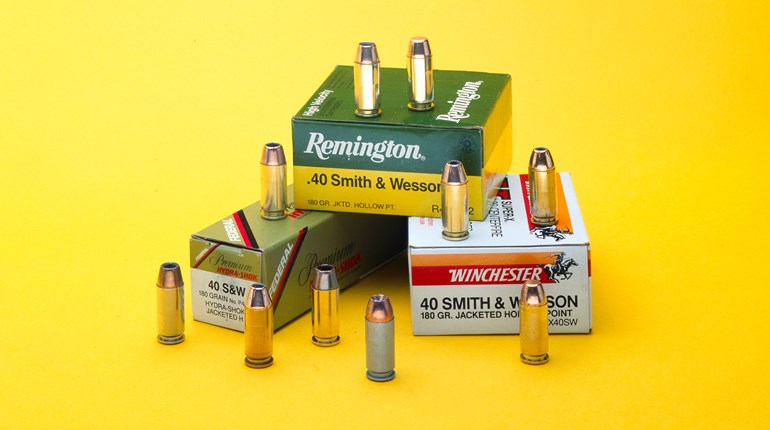
Going on 40 years ago, I blundered my way into my first job in the gunwriting business. It was a function of pure, dumb luck on my part and for that, I am eternally thankful. Among the many blessings of this luck were the great people I met and the range of new experiences. Such new people included the late Chuck Karwan, my fellow Vietnam vet and as good a friend as I could possibly want. Experiences included the two major shows of each year: the SHOT show and the NRA Annual Meetings. Those extravaganzas let you see literally everything new in the world of guns, ammo and accessories. Karwan and I were working for the same magazine and were always first to enter the show and last to leave. We couldn’t miss a thing.
This was the late 1980s, back when the first Glock pistols were offered for sale in America and another gunwriter coined the wry term “Wondernine Wars.” The world of handgunnery was on fire with new 9 mm pistols and new 9 mm loads. Much of the rationale stemmed from several much-publicized gun battles, the results of which suggested the good guys needed more capacity in their guns. The logic of that point might be a little shaky, but the result was a pronounced interest in greater-capacity pistols, the majority of which at the time were DA/SA operated. Therefore, Karwan and I had a lot to look at as we headed into the NRA show in Reno, NV. Among many other things, we saw a wide array of 9 mm handguns, including several new ones. This was interesting to us, because we had recently completed a book in which I had fired and reported on 50 different 9 mm handguns.
There were several revolvers in that group, so we were interested when we heard that there was a new 9 mm over at the Charter Arms booth. There was—the company’s small size, five-shot revolver—but there was even more news. There was a new 9 mm cartridge, which was intended to solve the headspacing problem of 9 mm ammo in revolving-cylinder handguns. Specifically designed for use in typical magazine-fed semi-automatics, the 9 mm does not have a rim protruding beyond the body of the cartridge.
The headspacing (fitting the cartridge to the chamber) in a semi-auto happens when the case mouth stops against a shoulder in the chamber. In a revolver, headspacing happens when the rim fits against the rear face of the cylinder. The new cartridge, called the 9 mm Federal, was simply a 9 mm with a .38 Spl. rim. The initial load was a hot, 115-grain JHP right at home in the strong steel cylinders of modern revolvers. In the promotional material accompanying the new product introduction at Federal, there were also pictures of Ruger Speed-Six revolvers in the new chambering. It looked like the 9 mm-shooting public was going to get a new option in 9 mm guns.
Karwan and I were taken with the idea of a 9 mm revolver, particularly if regular 9 mm ammo could be fired in the same gun. But, we were disappointed to find 9 mm ammo would not function in a 9 mm Federal chamber unless you used moon or half-moon clips to facilitate extraction. As designed, the 9 mm Federal cartridge worked perfectly in a revolver chambered for that cartridge, but no other. That’s not necessarily a deal-breaker, but it gave up a performance selling point. We also noted another feature of the new cartridge that was frankly a little scary.
The rimmed 9 mm Federal cartridge was dimensionally very close to the .38 S&W. This old cartridge dated to the blackpowder frontier era. In fact, the cartridge had a long service life in several top-break, medium-size Smith & Wesson and other revolvers. Even in inexpensive wheelguns of the turn of the century, the .38 S&W was much in use. And, the military forces of the United Kingdom used the .38 S&W as a service-revolver cartridge under a different name. Everything worked well, as long as the ammo used was correct as to when it was made. But, if a shooter was to load one of these blackpowder .38 S&W revolvers with the quite similar 9 mm Federal ammo, a catastrophic failure was a near certainty. The gun would blow up.
Karwan and I had a day-long drive back to the office from Reno and plenty of time to discuss the situation. We concluded that someone at Federal had probably noticed the problem by now, but we should report our observation on this possibility in case they had not. At the magazine’s office, we wrote a letter—signed by both of us—detailing our observations and concerns. We also offered a solution: If the 9 mm Federal were made with a double-thick rim, it would perform just as intended, but it would never chamber in a .38 S&W revolver. Furthermore, it would permit the use of the complete spectrum of 9 mm ammunition in a revolver marked as 9 mm Federal. It was the same situation as a .45 ACP revolver also using .45 Auto Rim.
We mailed our letter and went on with other features. In days, we got a gentlemanly letter in which we were advised that our observations were correct and our timing was excellent. The company was suspending further production of the ammunition. Only a limited amount of the stuff was made, and a small number of Charter Arms revolvers were ever produced. It was a pat on the back.
That’s why 9 mm Federal-caliber ammo was never fightin’ iron.




































